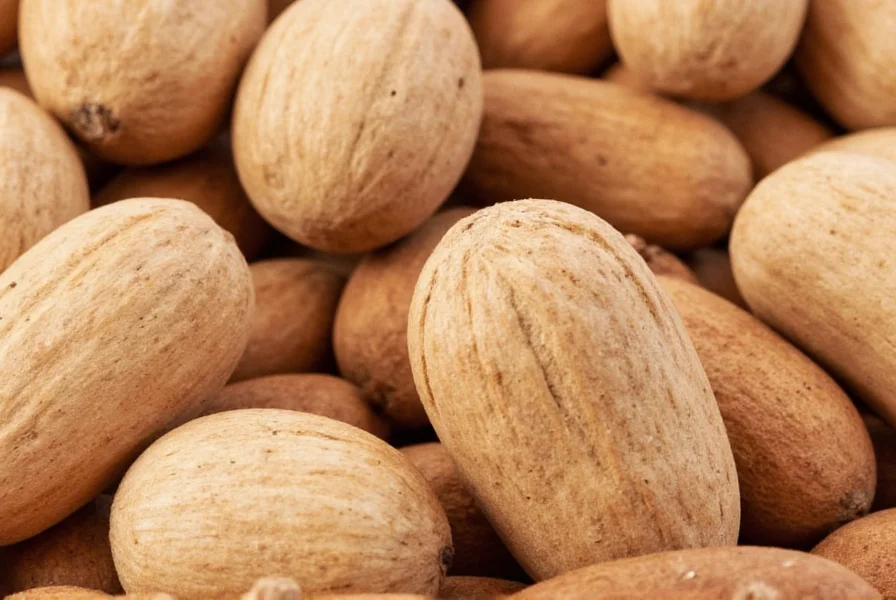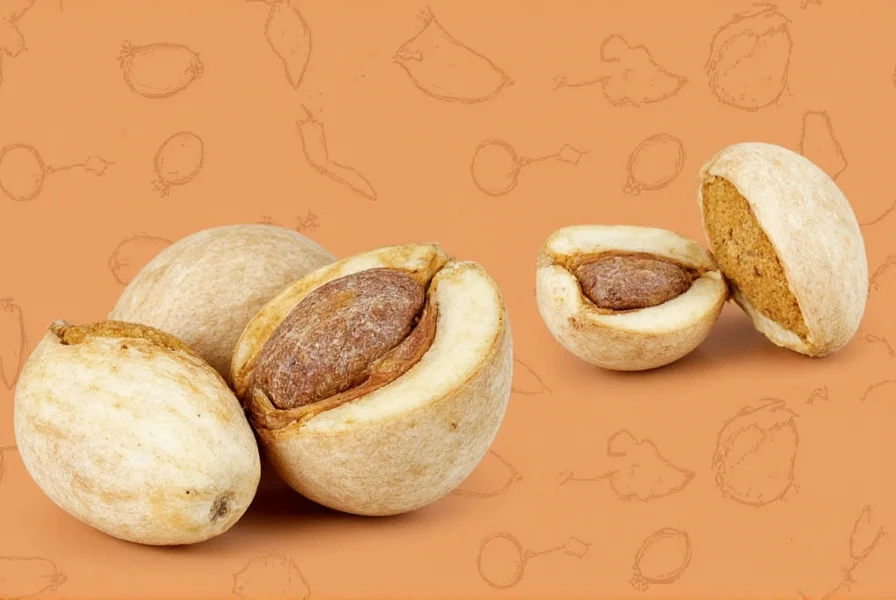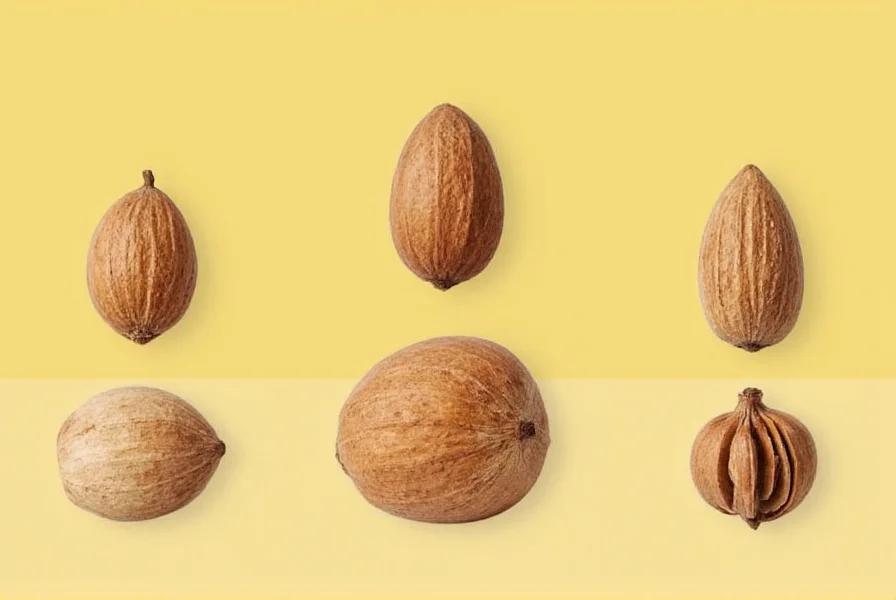No, nutmeg is not a nut. Despite its name, nutmeg is actually a seed from the fruit of the Myristica fragrans tree, a tropical evergreen native to Indonesia. This common culinary spice belongs to the Magnoliaceae family and has no botanical relation to true nuts like almonds, walnuts, or cashews. Understanding this distinction is particularly important for individuals managing nut allergies, as nutmeg typically doesn't trigger reactions in people with tree nut sensitivities.
Nutmeg's misleading name often causes confusion, especially among those navigating food allergies or dietary restrictions. This comprehensive guide clarifies nutmeg's true botanical classification, explains why it's called "nut" despite not being one, and addresses critical concerns for allergy sufferers. We'll explore nutmeg's relationship to mace, its culinary applications, and provide science-based information to help you make informed decisions about incorporating this versatile spice into your diet.
What Exactly Is Nutmeg?
Nutmeg comes from the seed of the Myristica fragrans tree's fruit. When the fruit ripens, it splits open to reveal a crimson-red, web-like covering called mace surrounding a hard, brown seed—the nutmeg. After harvesting, processors separate these two distinct spices: the seed becomes nutmeg, while the aril (covering) dries to become mace.
Botanically speaking, nutmeg is classified as a seed, not a nut. True nuts are hard-shelled fruits that contain both the seed and fruit fused together (like acorns or hazelnuts). Nutmeg, however, is simply the seed portion of a drupe (a fleshy fruit with a hard stone containing a seed), similar to how a peach pit contains a seed.
| Characteristic | Nutmeg | True Nuts (e.g., Almonds, Walnuts) |
|---|---|---|
| Botanical Classification | Seed from a drupe | Hard-shelled fruit containing seed |
| Plant Family | Magnoliaceae | Various (e.g., Juglandaceae for walnuts) |
| Allergen Profile | Generally safe for nut allergy sufferers | Common allergens |
| Origin | Indonesian Myristica fragrans tree | Diverse plant sources |
Why Is It Called "Nutmeg" If It's Not a Nut?
The name "nutmeg" derives from the Old French word "noisemugate" and Latin "nux" (nut) combined with "muscat" (musky), referring to its nut-like appearance and distinctive aroma. Early European traders in the 16th century named it based on superficial resemblance to nuts, not botanical accuracy. This historical naming convention has persisted despite modern botanical understanding.
Understanding this etymology helps explain why many spices and foods have misleading names. For instance, star anise isn't related to anise, and peanuts are legumes, not nuts. Culinary naming often prioritizes appearance or flavor over scientific classification.
Nutmeg and Mace: Two Spices, One Fruit
Many people don't realize that nutmeg and mace come from the same fruit. When the Myristica fragrans fruit matures, it develops a split revealing:
- Mace: The bright red, lacy aril (covering) surrounding the seed
- Nutmeg: The hard, brown seed inside the aril
Mace has a more delicate, slightly sweeter flavor than nutmeg, but both share similar aromatic compounds. This relationship explains why some recipes specify one spice over the other, though they can often substitute for each other in cooking.

Nutmeg Allergies: What You Need to Know
Individuals with tree nut allergies often worry about nutmeg, but scientific evidence shows nutmeg rarely causes reactions in people with nut allergies. The American College of Allergy, Asthma, and Immunology confirms that nutmeg allergy is extremely rare and unrelated to tree nut allergies.
However, two important considerations exist:
- Cross-contamination risk: In facilities that process both nuts and spices, nutmeg could become contaminated with actual nuts
- Individual sensitivities: Some people may develop specific sensitivities to nutmeg itself, though this differs from tree nut allergies
If you have severe nut allergies, check spice labels for "may contain nuts" warnings and consider purchasing nutmeg from dedicated nut-free facilities.
Culinary Uses of Nutmeg
Nutmeg's warm, slightly sweet flavor enhances both sweet and savory dishes. Professional chefs prefer freshly grated nutmeg over pre-ground versions for superior flavor. Common applications include:
- Savory dishes: Bechamel sauce, mashed potatoes, roasted vegetables, and meat dishes
- Sweet preparations: Pumpkin pie, eggnog, custards, and baked goods
- Beverages: Mulled wine, hot chocolate, and specialty coffees
When using nutmeg, remember that a little goes a long way—a quarter teaspoon typically suffices for most recipes. Overuse can make dishes taste medicinal due to myristicin, a compound also found in parsley and carrots.
Safety Considerations for Nutmeg Consumption
While culinary amounts of nutmeg are safe, consuming large quantities (several tablespoons) can cause nutmeg poisoning due to myristicin. Symptoms may include:
- Dizziness and confusion
- Nausea and vomiting
- Increased heart rate
- Visual disturbances
These effects typically occur only with excessive consumption far beyond normal culinary use. The European Food Safety Authority considers nutmeg safe when used as a spice in normal food quantities.

Choosing and Storing Nutmeg
For optimal flavor, select whole nutmeg seeds rather than pre-ground powder. Look for:
- Firm, heavy seeds (indicates freshness)
- Deep brown color without spots
- Strong aroma when scratched
Store whole nutmeg in an airtight container away from light and heat. Properly stored, it maintains peak flavor for 1-2 years. Ground nutmeg loses potency within 6 months, so grinding fresh before use delivers the best culinary experience.
Conclusion
Nutmeg's name creates understandable confusion, but this versatile spice is definitively not a nut. As a seed from the Myristica fragrans tree, it belongs to a completely different botanical category than tree nuts. This distinction matters most for individuals managing nut allergies, who can typically enjoy nutmeg safely while remaining cautious about potential cross-contamination. Understanding nutmeg's true nature helps home cooks and allergy sufferers make informed decisions while appreciating this ancient spice's unique culinary contributions.











 浙公网安备
33010002000092号
浙公网安备
33010002000092号 浙B2-20120091-4
浙B2-20120091-4